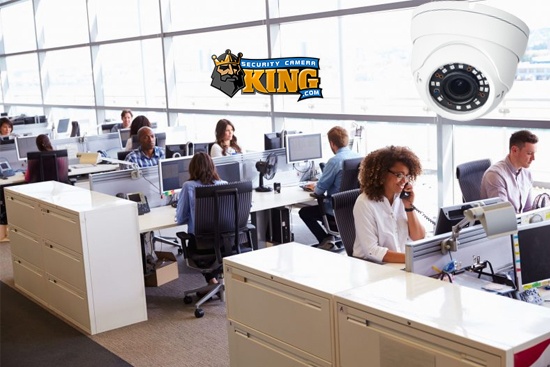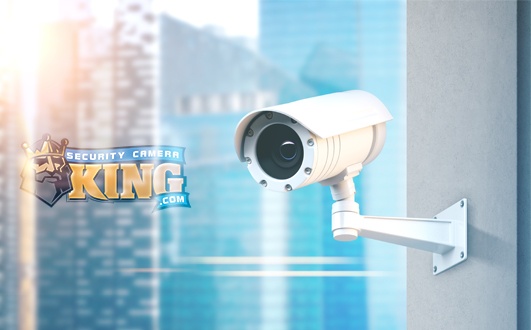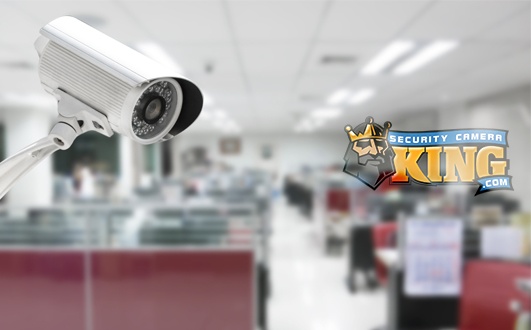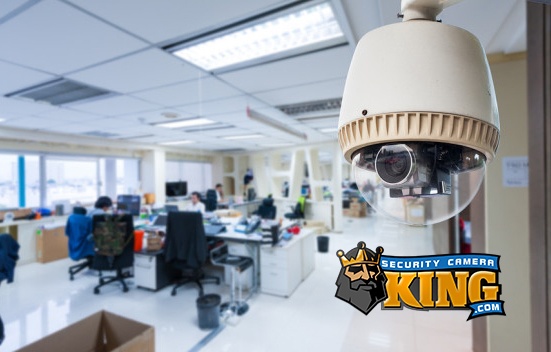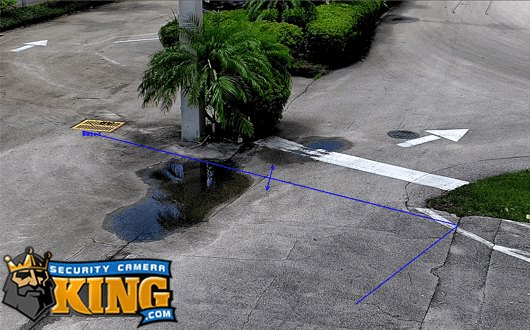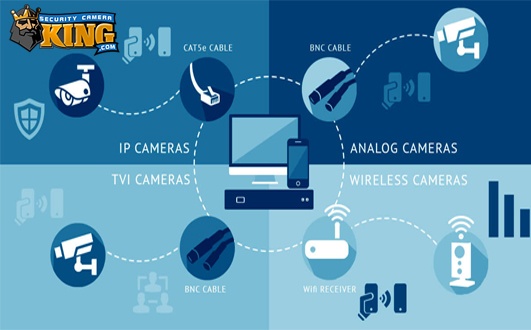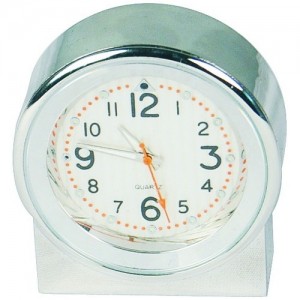 Nanny cams are hidden cameras that have been installed in common, every day household items. The camera is used (secretly) to monitor and record the daily activities of home caregivers; hence the name “Nanny Cam.”
Nanny cams are hidden cameras that have been installed in common, every day household items. The camera is used (secretly) to monitor and record the daily activities of home caregivers; hence the name “Nanny Cam.”
A Nanny cam can be used remotely, where it’s video is transmitted by radio waves to a receiver hooked up to other devices (Digital Video Recorders or DVRs, sent over the internet,) or you can use a “hardwire” run which, unless your careful, will more than likely stick out and be easily seen.
Are Hidden Nanny Cams Legal?
It is generally legal to videotape nannies without their permission; however, using cameras with audio can impose legal ramifications since it may fall under “eavesdropping” or “wiretapping” laws governing use of a device with an audio component to tape a sitter without consent. These laws vary from state to state. Check with your local laws to confirm.
We all have expectations of privacy in private places. But should we expect privacy in the home of another? The answer is “NO.”
Parents and other proponents of nanny-cams argue that the installation of a hidden camera in their own home is not an invasion of privacy.
The court has agreed. In State v. Diaz, 706 A.2d 264 (1998), the leading case on this topic, the court ruled that a videotape made by a hidden camera in the residence of the parents of the child was admissible as evidence in the lawsuit against the nanny for assault and child endangerment. The court decided that since there was an absence of state action, the Constitution did not protect the nanny’s privacy in someone else’s house.
The court also held that a videotape without sound did not violate the Wiretapping and Electronic Surveillance Control Act, but furthermore, that sound was admissible because the parents had consented to their child being taped.
States vary on this particular issue, but most agree that a videotaping your nanny without her knowledge is perfectly legal so long as there is no sound. Audiotaping without the nanny’s consent is an issue upon which the states are split.
There are a variety of reasons people choose a Multi Camera System. Many parents who are using a nanny service for the first time want to make sure that their choice of a nanny is good. Many times you will find out about a nanny’s behavior in the first month or two. The fact that one’s child has been entrusted to someone you hardly know can be a big leap of faith. Parents may be concerned about a sitter’s everyday behavior such as smoking or cursing, or they may have greater concerns of whether the caregiver is paying enough attention to the child, or is physically or emotionally abusing the child.
“I want to know when I leave and close that door what’s going on behind it. I want to know my child is safe and being nurtured, played with, sang to and loved,” says Maria. “I think the ethics go right out the window when it comes to protecting our children. Caregivers are paid to keep your kids safe and happy, not to get mad at your kids, yell at them and hit them or put them in a swing all day and neglect them.
Most nanny cams are set up so they do not record audio but do record video. There’s a very good reason for this.
According to the US Code Title 18, Chapter 119, Section 2512 prohibits the interception of oral communication by “surreptitious manner,” such as a hidden camera, and so most nanny cams are not available with audio recording. Though some on the market may be available with the ability to record audio, these cameras should not be used due to the illegality of the recordings they produce. Nanny Cams are legal in all 50 states,but it is illegal in 13 states to record audio without express, or written consent of the nanny being recorded. This falls under the federal governments wire tapping laws.
However, there’s also a very good solution for all of this and that is purchase whatever kind of camera you feel most comfortable with and when installing it, simply do not connect the audio.
Why Use a Nanny Cam?
“2008 – A couple said they did everything possible to make sure the child was in safe hands when they discovered abuse by the nanny by using a hidden nanny camera.”
“Stephanie M. the subject of a widely publicized nanny cam video recorded by her employer faces two misdemeanor counts of child abuse in Cary, North Carolina.”
“A Florida nanny is behind bars for allegedly abusing an 11 month old child. The abuse case was captured on a hidden nanny cam. Investigator Adrian K speaks about some warning signs of abuse cases.”
“Nanny cam captures abuse on tape; A Florida babysitter is jailed after video shows her slapping an infant.”
Unfortunately, there are many more incidents like those listed above. These real examples do indicate a very strong case for the use of a nanny cam. The use of a nanny cam is not limited to monitoring the care of an infant. The use of a nanny cam can not only protect children but may be able to support a nanny or baby sitter when children make untruthful claims of abuse to their parents. The bottom dollar is anytime it’s necessary to keep track of who’s watching who the nanny camera setup is an excellent choice. And the camera doesn’t lie.
What Exactly is a Nanny Cam?
A nanny cam is a digital video camera that may be hidden, disguised, or even fully exposed and is used to monitor the day to day activities of your nanny and child(ren). There may be one or more cameras based on the type of coverage you desire. For example some parents feel comfortable placing just one camera in the child’s room, nursery, or play area. Others prefer to have coverage in just about every room in the house; the choice is yours and with today’s high tech cameras and Digital Video Recorders (DVRs) it is not only possible but economically feasible as well so the average family can easily afford a digital video surveillance system.
How Do Nanny Cams (or Cameras) Work?
The following is a brief description of the technical aspect of typical digital video camera:
Digital video surveillance and security cameras have gone through many changes over the past few years and are ever changing with the increases in technology. Older systems used strictly analog cameras with analog video recorders. A bit of irony exists today because “digital” video cameras today still produce an analog image but it is converted to a digital image before it leaves the camera.
Nanny cams basically consist of three major components: 1. The lens; 2. The sensor chip; and, the Integrated Circuitry (IC) or IC chip.
Let’s begin our description with the lens. The lens’ primary function is to capture light reflected from objects in its field of view and focus them onto the tiny sensor chip that converts the light energy into electrical energy. Lenses may be specified as fixed or varifocal. A fixed lens cannot move and the angle of vision or field of vision is fixed at one particular size. A varifocal lens can move in and out changing its focal length and thereby changing the angle of the field of vision from wide to tight.
The aperture is also considered part of the lens. The aperture is diaphragm type hole that the light must pass through as well. This is for controlling the amount of light focusing on the sensor chip. Generally, a very bright shot requires a small aperture so the shot is not completely washed out with light. Under conditions when there is not enough light, the aperture opens fully to let as much light in as possible.
Once the light passes through the lens and aperture it strikes a photoreceptive sensor. There are actually two different sensors that are available for use when manufacturing a nanny cam. Each works in a different way yet they bear the exact same results; transferring light energy into electrical energy that can be measured.
One of the sensors is called a Charged Coupled Device or CCD and the other is called a Complementary Metal Oxide Semiconductor or CMOS. Each of these sensors come in different sizes but for a typical high-quality nanny cam they are usually 1/4 or 1/3 inch square. As the focused light strikes the surface of the CCD or the CMOS the sensor transfers the light energy into electrical energy which can be measured and manipulated to create a digital video image that can be viewed on a monitor.
The camera is basically the same as a camera that creates photographic images. The difference is the nanny cam takes several photographic images, usually from 7 to 30 per second, also called frames per second or fps. At 30 fps the human brain is fooled into thinking that it is seeing fluid motion. This is the same concept that has been used for years in the motion picture industry.
On inherent quality of both the CCD and the CMOS is that they are also sensitive to Infrared Radiation, specifically IR in the near zone of the IR spectrum. This means that by using IR Light Emitting Diodes as spot lights, these cameras can “see” in total darkness. The human eye however, cannot see the light created by the IR LEDs which makes these cameras excellent for monitoring dark rooms.
The DVR
The DVR for a nanny cam can be a typical DVR that is used with a complete system or the camera may contain a “built in” DVR so that the camera and DVR is all one self-contained unit such as the pen camera. The ink pen camera is a working ink pen, a camera, and a DVR all in one unit (this is a good example of how technology is used in the video surveillance industry). When the user is ready to review the video footage they plug the pen into a USB port on their computer and sit back and watch the footage.
Other camera/DVR single units may use SD cards, Mini cards, USB Flash drives, and other portable memory media as their DVRs.
What Camera Do I Use?
Security Camera King has many hidden or disguised cameras that make excellent nanny cams. Below is a partial list of just some of the cameras or camera/DVR combinations available:
- Button cameras – this cameras are actual buttons an come with extra buttons that are the same type as the one used on the camera to complete its total disguise;
- Phillips head screw camera – That’s right a camera the size of an average screw head!
- Desktop speaker camera – These look and work like typical computer desktop speakers but with one difference, one speaker has a camera inside;
- Wall clock and alarm clock cameras;
- A wall heater/air conditioning thermostat–although the thermostat does not actually work the hidden camera inside does;
- Circular vanity mirror with touch activation;
- Carbon monoxide or smoke alarms – these units usually don’t work as alarms but the do a great job of hiding the camera; and
- Telephones and even a Tissue Box with embedded cameras.
Of course this is not a complete list of available cameras from Security Camera King but it should give you a good idea of what is available.
This still doesn’t answer the question as to what camera to use, but at least you have a better idea of what is available. First, you need to determine how extensive your nanny cam coverage will be so you know how many cameras you will need to do the job. As mentioned earlier, it can be a s few as one camera or as many as several.
The next step is to determine if they will be overt or covert cameras. If your monitoring is overt standard box, bullet, or dome cameras would be sufficient. On the other hand, if your coverage is going to be covert, you need to consider what type of disguised or hidden camera will satisfy each location.
If you determine that you only need one camera, a standalone hidden camera/DVR unit may be the answer. However, if you desire entire home coverage with say, 8 cameras, it may be best to install a digital video security and surveillance system with a full-service 8 camera DVR.
And finally a word of caution. Each state has different laws governing the use of cameras and especially audio recorders without the subject’s knowledge. Make sure you confirm your state’s laws before attempting to record anyone covertly. This doesn’t mean that you can’t record improper or criminal activity but planned, deliberate, covert recording may require special concessions on the part of the person recording.
As you can see, with a little guidance and pre-planning setting up your own nanny cam really isn’t difficult to do. If you do encounter problems contact Security Camera King’s security experts and they’ll be glad to answer any questions you may have and get you up and running fast.
If you neeed more information on nanny cams contact one of Security Camera Kings security experts and they will answer any additional questions you may have.






